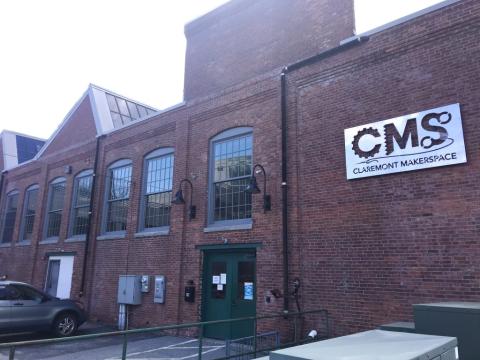Collaboration Was Key at Leadership Upper Valley’s Economic Development Day
On January 8, the 2025 graduating cohort of Leadership Upper Valley spent the day at the Claremont MakerSpace learning about economic development efforts from practitioners at the local, regional, state and federal levels. This year’s class is comprised of an impressive group of 20 community members from a wide array of private and public sector backgrounds who are united in their desire to make a positive impact in the Upper Valley region. I was fortunate to have the honor of participating in the day’s first panel discussion about the big picture of economic development.
Leadership Upper Valley is a program of Vital Communities, a nonprofit with a mission to “engage Upper Valley people, organizations, and communities to create equitable solutions to [the] region’s challenges, with a focus on those disproportionately impacted by them.” Once a month for 10 months, Leadership Upper Valley participants go on a full-day deep dive of learning and strengthening connections about local issues and opportunities surrounding a facet of the Upper Valley community, such as education, health and human services, government and politics, transportation and livability, and economic development. In New Hampshire there are a total of 10 regional leadership programs throughout the state that offer similar opportunities for residents to learn, connect, and find out about opportunities to get involved in their local community.
A few years back I was a graduate of a regional leadership program in another state, so I selfishly jumped at the chance to participate, knowing that this was a great opportunity for me to learn and connect with an incredible group of people who are also passionate about community and economic development in the Upper Valley. I was joined on the panel by the Director of the Greater Claremont Chamber of Commerce, Elyse Crossman, and the USDA Rural Development Community Economic Development Representative for New Hampshire and Vermont, Richard Armore. We kicked off the day’s activities with a lively conversation about what economic development is from the perspectives of our individual roles, and particularly how economic development manifests in the region to enhance the quality of life for residents in the Upper Valley.
Collaborative partnerships were a common thread woven throughout the conversation, so it was especially germane that Leadership Upper Valley’s Economic Development Day was held at the Claremont MakerSpace, a membership-based, community-oriented creative hub housed in Claremont’s historic Sawtooth Building. The MakerSpace offers several flexible and affordable membership levels, and provides members with programs, classes and use of state-of-the-art equipment, technology and tools for makers and designers of all types. Not only does the MakerSpace nurture collaboration, but also its origins are a great example of a local collaborative economic development effort.
Originally constructed in 1902, the Sawtooth Building served as the Forge Shop and eventually a chemical storage facility for one of the city’s largest employers, Sullivan Machinery Company which later became Joy Manufacturing. For about half a century, as the manufacturing sector began to shrink in New England, the building sat underutilized and fell into a state of disrepair after Joy Manufacturing closed in the 1980s (the Claremont MakerSpace Executive Director, Felicia Byrch-Dalke has a great story about the time they found a moose trapped in the building, who somehow fallen through the roof).
It took several public and private entities to come together to transform this once-blighted property into a hub of creativity and innovation for the Upper Valley. Partners including the City of Claremont, Northern Borders Regional Commission, New Hampshire Community Development Finance Authority and TwinState MakerSpace worked together to clean up the property, preserve the building’s historic features, bolster its foundation and structural supports and upgrade its mechanical, electrical and plumbing systems. In 2023, TwinState MakerSpace won the New Hampshire Preservation Alliance Achievement Award for the revival and reuse of the historic Sawtooth Building.
Inspired by the setting, during the discussion, we shared examples of how local businesses, organizations and governmental agencies are working together on economic development strategies to enhance livability in the region. Some of the collaborations we panelists work to support include efforts to bolster outdoor recreation, address regional housing needs, increase revenues from the visitor economy, and bring vibrancy to downtowns and village centers through recreation, arts and culture, and historic preservation.
The conversation was enriched by the thoughtful questions from Leadership Upper Valley attendees about such important things as how to identify the needs of communities, and how to measure an economic development effort’s success. It reminded me of how the impacts of successful strategies often manifest over long periods of time and may not be measurable by numbers.
Sometimes the impacts are better measured by how we feel about living in our communities. Do we have access to the things and services we need throughout all our stages of life? Are there places where we can connect with friends, family, and neighbors? Are there opportunities to contribute meaningfully to our communities? Are there things to do that we find enjoyable or enriching? When I ask myself those questions, I am so grateful to say yes.
For more information on regional leadership programs visit:
Leadership Upper Valley - Vital Communities
Leadership Programs - Statewide and Regional — Stay Work Play New Hampshire
